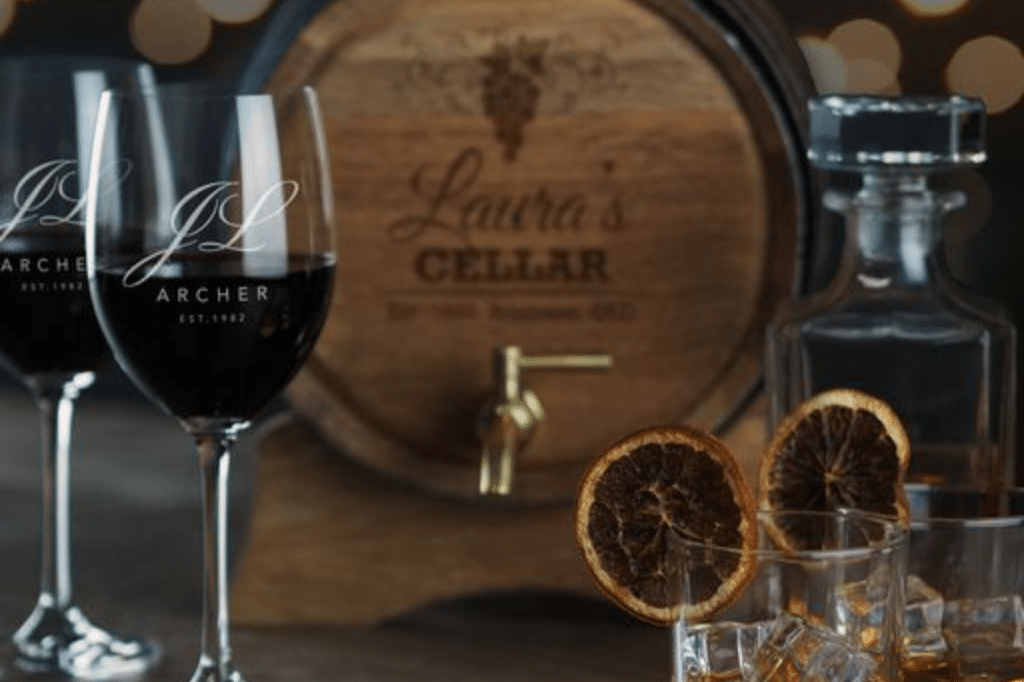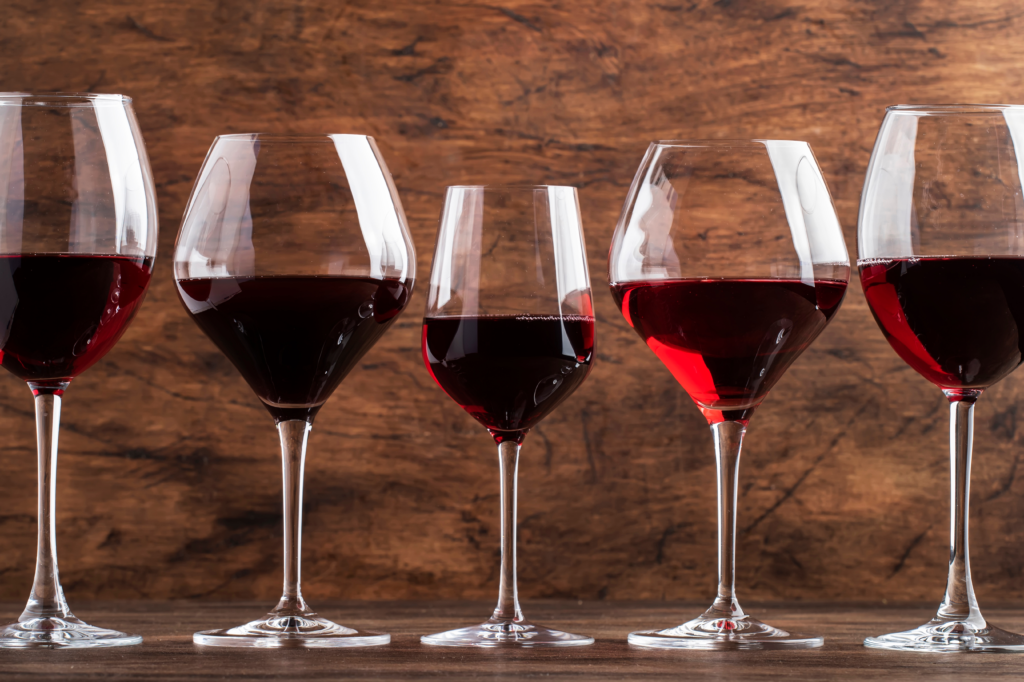How to Age Wine at Home: A DIY Guide to Cellar-Quality Results
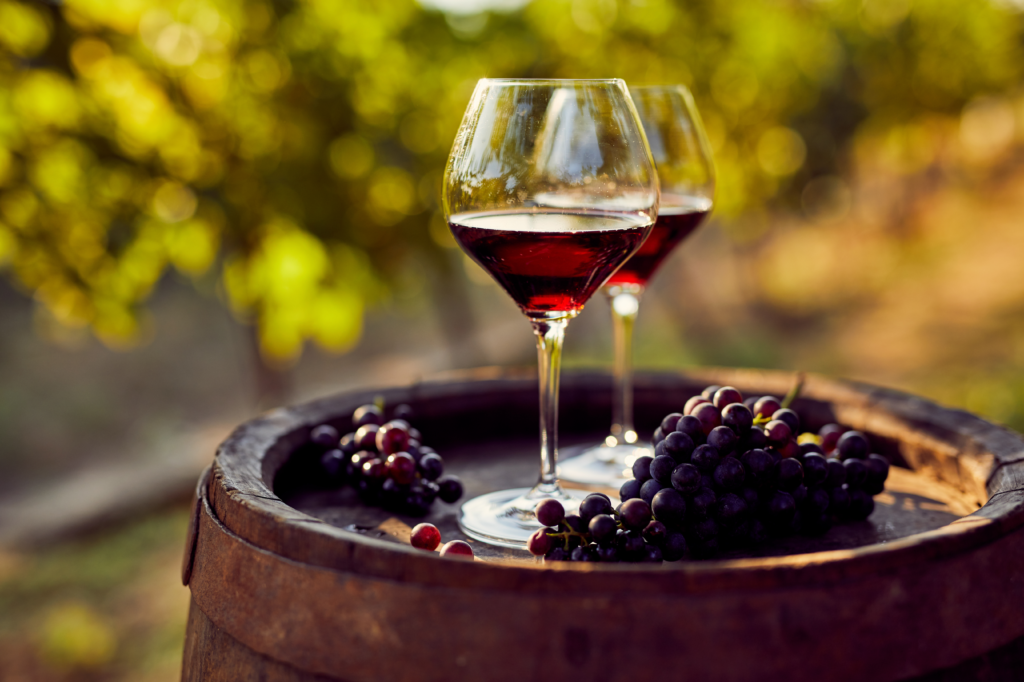
Wine connoisseurs and amateurs around the world share a cherished tradition that dates back to ancient Rome – the art of aging fine wines. If you’re keen to try your hand at aging wines at home, there are some important factors to consider first. Will you age wines in the bottle or in a barrel? Do you have a suitable environment for storing wine, and which wine styles are best suited to aging? We’ve put together a comprehensive guide to aging and cellaring wine in your home.
Your journey into wine aging promises delightful rewards – from discovering complex bouquets that emerge over time to watching your collection grow in both character and value. We’ll share our expertise to help you master essential aging techniques, select the perfect oak barrel, and create ideal storage conditions worthy of the finest cellars.
Understanding Wine Aging Fundamentals
Chemical Changes During Aging
Watch as nature works its magic within your aging wines. Tannins, those small bitter molecules, gradually join to form longer chains, imbibing your wine with that coveted silky-smooth texture. Your wine’s appearance tells its own story – red wines shed their deep, inky coat for subtle orange-tinged edges, while white wines embrace deeper, richer hues.
Wines Suitable for Home Aging
- Your finest aging candidates share these qualities:
- Natural preserving acidity levels
- Strong, structured tannins (in red wines)
- Distinguished vintages from trusted winemakers. Choose bottles that already showcase a beautiful balance of fruit, acid, and tannins.
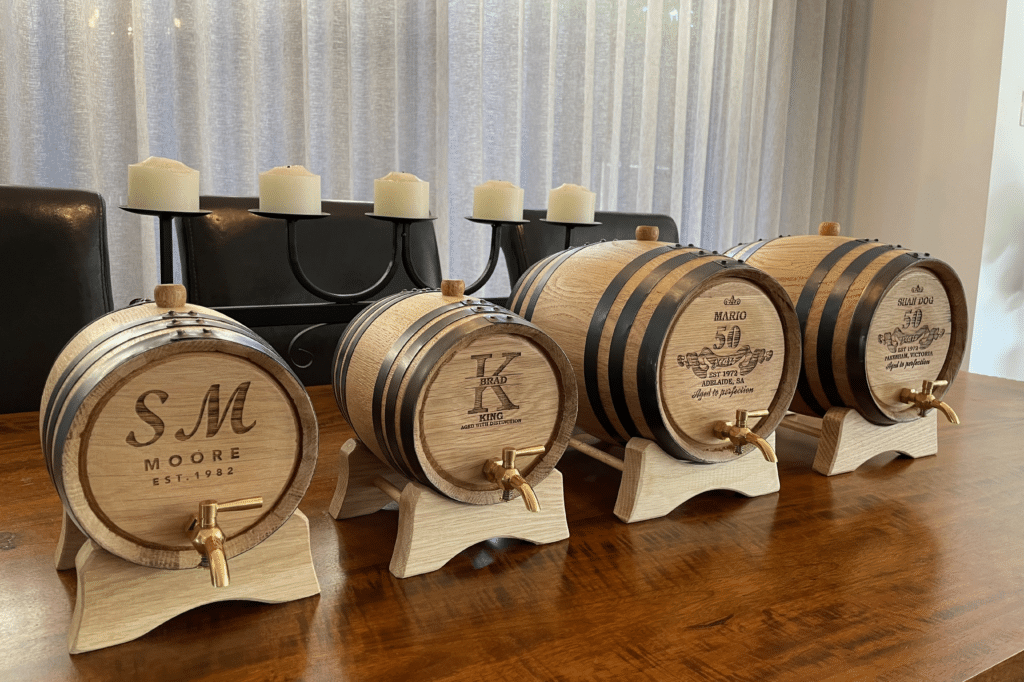
Cellaring VS Barrel Aging
Cellaring (bottle aging) and barrel aging are two distinct wine maturation processes that significantly impact the flavour, aroma, and overall quality of the wine over time. Storing wine in wine bottles will allow certain flavour elements to develop, whereas barrel aging will impart more complex notes and tannins to develop.
The main reason people opt for barrel aging over cellaring is that it’s faster thanks to the increased oxygen exposure imparted by the wood.
Both methods contribute to the complexity and quality of wines, offering unique benefits depending on the desired outcome. The choice between barrel aging and cellaring depends on factors such as grape variety, winemaking style, and the intended flavour profile of the final product.
Here’s an overview of the differences between the two techniques.
- Environment:
- Barrel aging: Occurs in wooden barrels, typically oak, allowing for oxygen interaction and wood flavour extraction.
- Cellaring: Takes place in sealed bottles with minimal oxygen exposure, focusing on internal chemical reactions.
- Flavour development:
- Barrel aging: Imparts woody notes (vanilla, toast, caramel) and allows for faster flavour enhancement due to oxygen exposure.
- Cellaring: Develops more subtle flavours gradually, preserving the wine’s fruit characteristics and allowing for gentle evolution.
- Oxidation:
- Barrel aging: Controlled oxygen exposure softens tannins and balances harsh elements, contributing to a smoother mouthfeel.
- Cellaring: Minimal oxidation occurs, resulting in slower flavour integration and development.
- Duration:
- Barrel aging: Generally faster due to increased oxygen exposure and wood interaction.
- Cellaring: Typically a slower process, allowing for more gradual flavour development over time.
- Texture:
- Barrel aging: Often results in a smoother, more velvety texture due to tannin modification.
- Cellaring: Focuses more on flavour integration, with less dramatic textural changes.
- Best for:
- Barrel aging: Ideal for wines that benefit from oxidative aging and wood-derived flavours.
- Cellaring: Better for preserving freshness and purity of fruit, especially in lighter white wines.

Setting Up Your Home Wine Aging Space
Temperature and Humidity Control
Ideally, your wine aging space needs to be kept at a steady 13°C. Moisture plays an equally vital role, with 70% humidity creating the sweet spot for proper aging. Mind the balance carefully – excessive humidity welcomes unwanted mould on corks when bottle aging, while dry conditions lead to cork damage and precious wine evaporation.
Light and Vibration Management
Your bottled wines need protection from harmful ultraviolet rays, which can disturb their delicate organic compounds. Our recommendations for cellaring include:
- Solid or UV-resistant cabinet doors
- Thoughtful placement away from sunlight
- Gentle LED lighting for viewing
- Careful distance from vibrating appliances
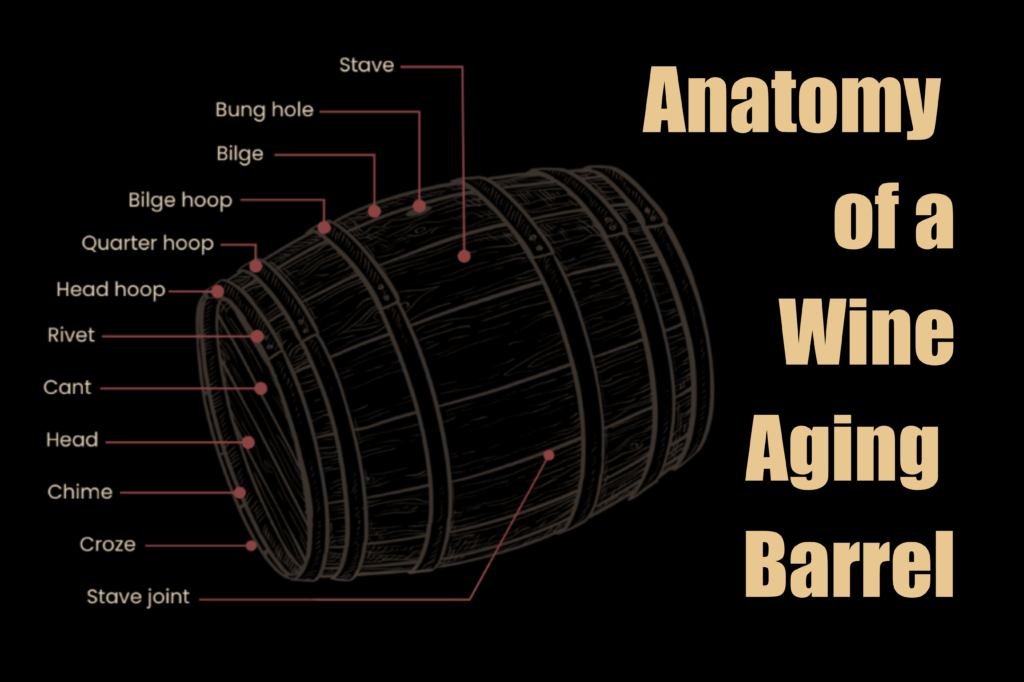
Mastering Oak Barrel Ageing at Home
The art of barrel aging begins with choosing the perfect oak vessel for your wine. Our years of crafting barrel-aged wines have taught us the delicate balance of tradition and precision this practice demands.
Choosing the Right Oak Barrel
Read: How to identify a genuine oak barrel
- Size. Small barrels work their magic faster, thanks to enhanced wood contact. For personal wine collections, we recommend aging using 2L, 5l or 10L American oak barrels.
- Material. American white oak barrels are best for aging wine, imparting complex flavours and colour.
- WARNING: Beware of Imitations. Cheap imitation barrels won’t actually age your wine as they contain a plastic lining – they’re essentially just a glorified storage container. To genuinely age your wine, the barrel must be the real deal – ideally rift-cut, charred American White Oak.
Barrel Preparation and Maintenance
- Cure and seal. Start by filling the barrel with hot tap water. Allow it to soak for 3 to 5 days. This allows the barrel to swell tightly against the hoops and ensure that the barrel doesn’t leak. Water may leak from between the staves or at the barrel head seam. This is normal and will stop within 24 hours as the wood swells.
Barrels that do not leak should still be cured for 3 to 5 days. This will minimise the amount of alcohol absorbed by the barrel staves. - Storage. After curing the barrel, empty the solution and rinse with hot water 3 times. Now fill the barrel with your spirits and place the bung in tightly. Aging barrels thrive in 65-75% humidity. For best results store your barrel in a humid place where it is not exposed to sunlight or heat.
- Time. The time required to age a wine depends on your personal taste. This can be anywhere from a few months to three years depending on your personal taste and preferences.
The Best Wines For Barrel Aging
Each wine variety tells its own story – some, like Sauvignon Blanc, reach their peak in two years, while noble Cabernet Sauvignons can flourish for 15 remarkable years. Success in aging stems from your wine’s initial harmony. Choose bottles that already showcase a beautiful balance of fruit, acid, and tannins.
Some of the most age-worthy wines include:
- Cabernet Sauvignon. This bold red wine is a classic choice for barrel aging. Its high tannin content allows it to develop complex flavours over time. Expect notes of black currant, cedar, and tobacco to emerge.
- Syrah/Shiraz. Known for its rich, spicy character, Syrah benefits greatly from barrel aging. Look forward to developing aromas of black pepper, dark fruits, and smoky undertones.
- Merlot. A softer red that can become beautifully smooth with barrel aging. Aging enhances its plum and chocolate notes, adding depth and complexity.
- Chardonnay. For white wine lovers, Chardonnay is an excellent choice for barrel aging. It develops a creamy texture and rich, buttery flavours with hints of vanilla and toast.
- Pinot Noir. Though lighter in body, Pinot Noir can transform beautifully in a barrel. Expect to enhance its delicate red fruit flavours with subtle earthy and spicy notes.
As a craftsperson in the world of home winemaking, you’ll find that barrel aging is both an art and a science. It’s about patience, attention to detail, and a willingness to experiment. Each batch you age will be a unique expression of your skill and passion.
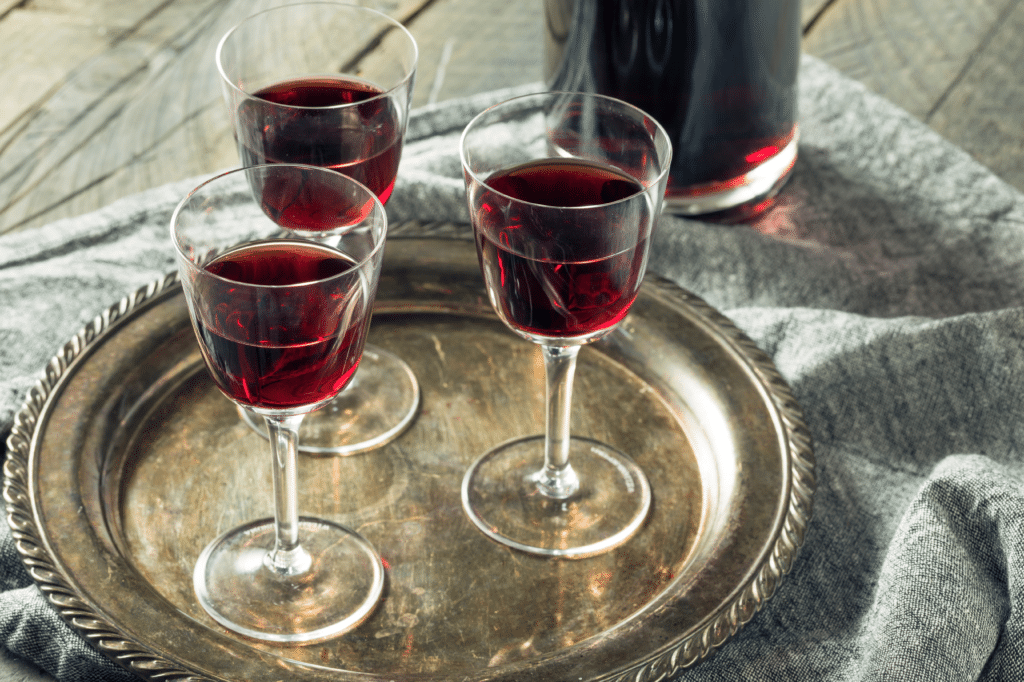
Monitoring Your Ageing Wine
The art of wine aging flourishes under watchful eyes. Our cellar experience shows that careful observation paired with meticulous record-keeping crafts truly exceptional aged wines.
Tasting Schedule and Documentation
Your wine’s journey deserves thoughtful attention every 4-6 weeks. We recommend keeping a log book of tasting notes to keep track of your wine’s aging progress. We suggest tracking:
- Rich tasting impressions and observations
- Subtle shifts in colour and clarity
- Evolving bouquet and flavour profiles
Common Issues and Solutions
- Oxidation Signs:
- Fading aromatic vibrancy
- Unwelcome cardboard notes
- Temperature Challenges:
- Hastened aging in warmth
- Sweet spot: 13-15°C
- Solution: Reliable temperature monitors
- Cork Considerations:
- Steady humidity (70-75%) preserves cork health
- Mindful top-ups ward off oxidation
- Solution: Stable cellar environment
Prevention outshines remedy in wine care. Your attentive eye catches subtle changes before they grow troublesome.
Consider embracing digital tracking or crafting detailed logbook entries.

Ageing Different Wine Varieties
Our cellar experience reveals the unique personality each wine variety brings to the aging process. Let us share our carefully crafted guidelines to help you understand your wine’s aging journey.
Red Wine
Red wines showcase remarkable staying power, thanks to their robust tannin structure. Noble varieties blessed with abundant phenolics, like Cabernet Sauvignon, Nebbiolo, and Syrah, possess extraordinary aging potential.
White Wine
White wines tell a different tale, typically dancing to a shorter rhythm than their red cousins. Though they lack tannins’ structure, their bright acidity stands guard over time. Chardonnay, White Rioja, Sauvignon Blanc and Riesling all make excellent wines for aging.
